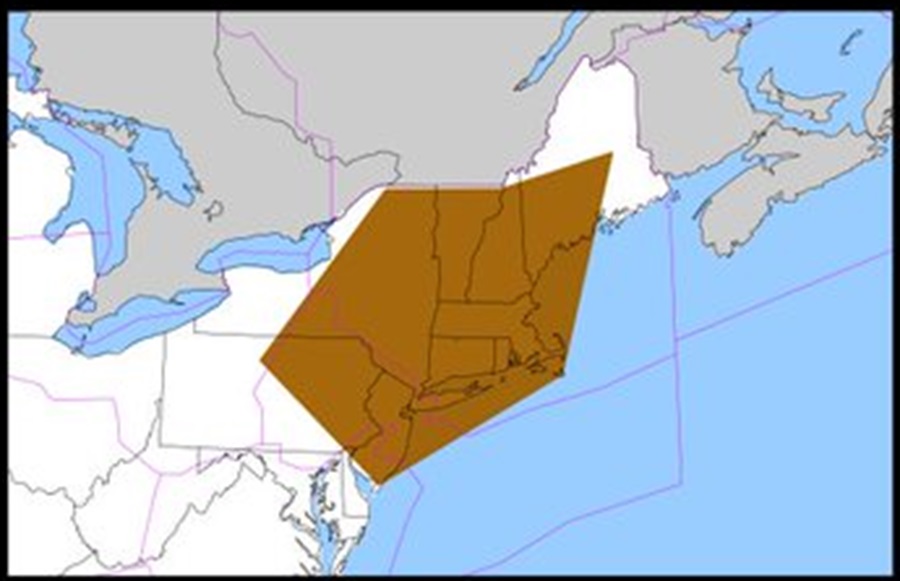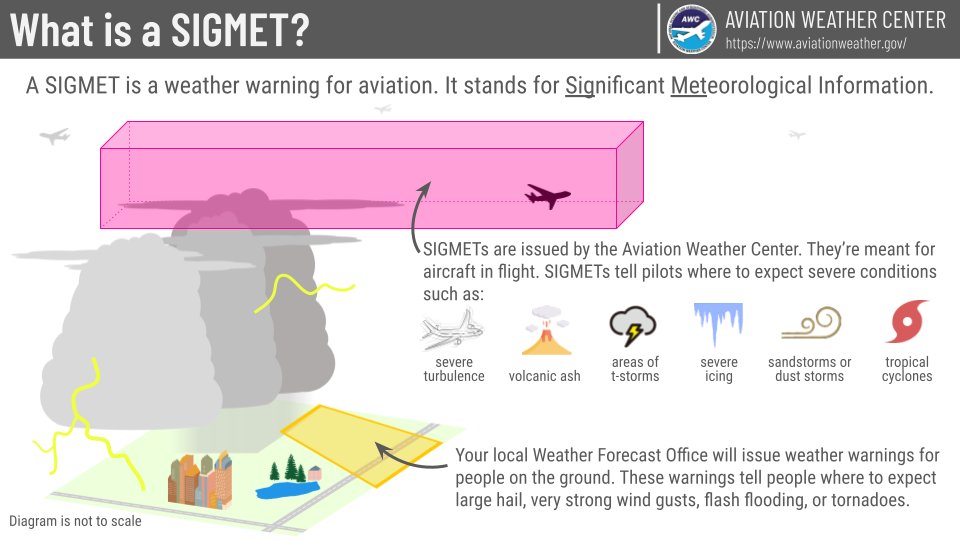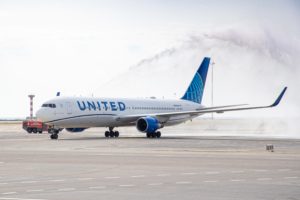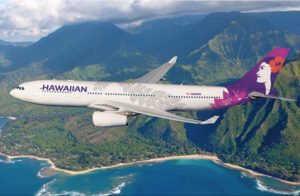
The National Weather Service’s Aviation Weather Center (AWC) has issued a Severe Turbulence Alert for portions of the northeast which includes the airspace above and around Pennsylvania’s Philadelphia International Airport (PHL), New Jersey’s Newark Liberty International Airport (EWR), New York City’s LaGuardia (LGA) New York City’s John F. Kennedy International Airport (JFK), and Boston’s Logan International Airport (BOS.) Many other airports throughout this region and aircraft flying in the airspace above are impacted by this alert. Major U.S. carriers American Airlines, Delta Airlines, and United Airlines all have a significant presence in this region. Much of this region dealt with poor weather, rough turbulence, and numerous flight delays and cancellations over the weekend.
Specifically, SIGMET OSCAR 8 has been issued through at least 0105 UTC tomorrow. The AWC says that there is occasional severe turbulence below 8,000 feet due to strong low level winds , strong up and down drafts, and low-level wind sheer.

Wind shear is a difference in wind speed and/or direction over a very short distance in the atmosphere. Airline pilots generally regard significant wind shear to be a horizontal change in airspeed of 30 knots (15 m/s or 34 mph) for light aircraft and 45 knots (23 m/s or 51 mph) for traditional airliners flying at flight altitude.

Flying through turbulence can be dangerous, with injuries encountered on U.S. airline flights over the last several months.
Just yesterday, at least 50 people were reported injured when a LATAM Airlines flight from Sydney, Australia to Auckland, New Zealand. The Boeing 787-9 Dreamliner encountered severe turbulence, resulting in injuries; one injury was considered “serious” by medics. LATAM released a statement saying 7 passengers and 3 crew were sent to the local hospital for treatment upon landing at Auckland.
But severe turbulence events also happen in the United States with U.S. airlines too.
In February 2023, a Newark-Tampa flight operated by United Airlines encountered severe turbulence. When flight 600 finally landed in Tampa, it was met by paramedics that treated passengers and crew at the scene. Ultimately, 1 flight attendant and 2 passengers needed hospitalization after being examined at the airport for injuries sustained during the rough flight.
Last winter, a United Airlines 767 jet encountered severe turbulence on its flight to Houston, Texas. Due to that encounter with rough air, 3 crew members and 2 passengers had to be rushed to the hospital for care upon landing.

The day before the Houston incident, Hawaiian Airlines Flight 35 flew through severe turbulence before landing at Honolulu International Airport after originating in Phoenix, Arizona. A Mass Casualty Emergency Event was declared, with dozens of passengers needing care for injuries sustained in the violent ride. Officials with Honolulu Emergency Medical Services and American Medical Response say the flight encountered the extreme turbulence about 30 minutes prior to landing; they treated 36 patients at the airport. 20 patients, ranging from a 14-month old toddler to older adults, were transported to hospitals near the airport, some with serious injuries.
Known as a SIGMET, short for Significant Meteorological Information, the severe weather advisory issued by the AWC contains weather-related information concerning the safety of all aircraft passing through a specific zone. Sometimes AIRMETs are issued too; an AIRMET consists of turbulence, visibility, and icing-related warnings that are less severe than those in a SIGMET.